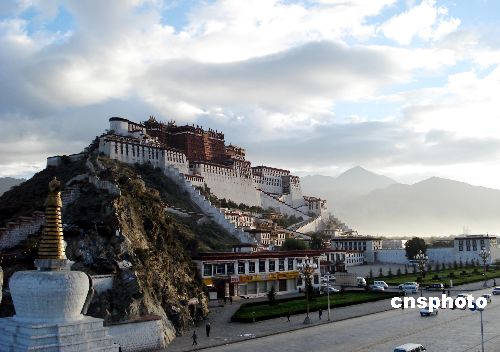| Tools: Save | Print | E-mail | Most Read |
| Lhasa to Build Mini Potala Palace amid Tourist Boom |
| Adjust font size: |
With the help of high-tech sound and light, the replica is expected to show a "vivid and almost real" According to Qin, the mini-palace will be housed in a "treasure exhibition hall" at the foot of Red Hill, where the real "We are working on a plan for the project and it is predicted to be launched in the second half of this year," said Qin, adding the regional government is considering to move some cultural relics into the new building from the Serving as the former residence of Dalai Lamas, the "With the opening of the Qinghai-Tibet Railway, more and more tourists come to visit the palace, but the ancient building with a history exceeding 1,300 years is becoming unbearable," said Qin. The 1,956-km Qinghai-Tibet railway has been operational since July last year, providing travelers with cheaper and safer access to the Roof of the World. About 2.45 million visitors landed in To protect the palace, administrators are restricting daily entries to around 2,300 tourists. Tour groups will be granted 1, 600 entries and the remainder will be distributed among Tibetans and individual tourists. "We are considering to build a e-booking system for the visitors to the palace so that they don't have to spend a long time waiting in front of the ticket office," said Qin, promising intensified efforts to combat ticket dealers this year. Located in the northwestern corner of The 13-story palace features the essence of ancient Tibetan architectural art and was included into the list of world cultural heritage by the United Nations Educational, Scientific and Cultural Organization (UNESCO) in 1994. The Chinese government spent 55 million yuan (US$6.6 million) repairing the palace between 1989 and 1994. The second phase of five-year repair work, involving 180 million yuan (US$22 million), started in 2002. (Xinhua News Agency March 14, 2007)
|
| Tools: Save | Print | E-mail | Most Read |
 |
| Related Stories |
|
Product Directory China Search |
Country Search Hot Buys |
